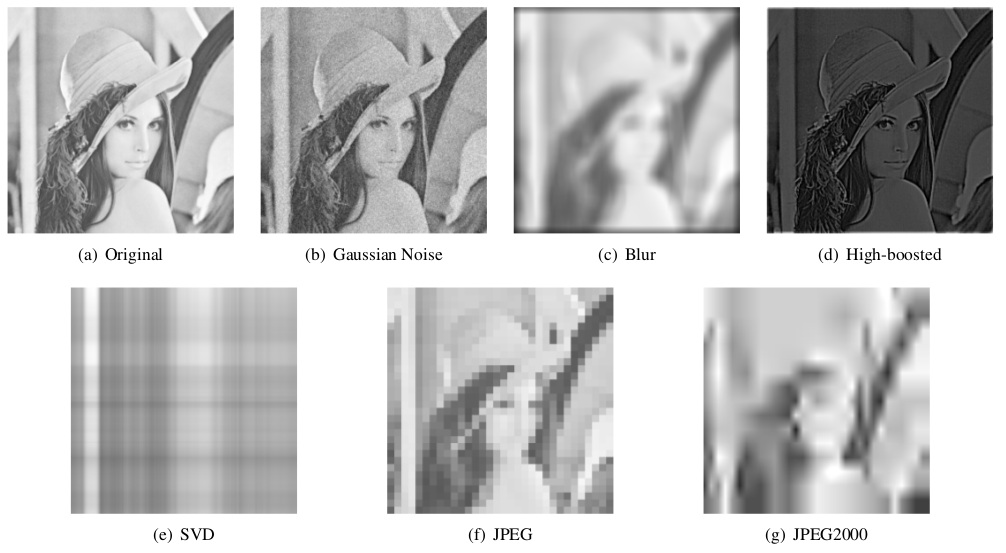Quality Assessment of Images
Image Quality Assessment: Quality Index Based on Local Variance (QILV index)
Images can suffer distortion due to several sources, from the acquisition process itself to compression, transmission through noisy channels and others. On the other hand, images can also undergo quality improvement processes, like enhancement or restoration techniques. In each case it is useful to quantify the quality of the resulting image. One easy way to do it is by using a reference image to carry out this task. These approaches are known as full-reference methods. The most straightforward parameters are those based on pixelwise error measurements, like MSE and other related parameters. Methods that do not use a reference image are known as blind quality assessment methods. Aswell, a small set of parameters of the reference image may be used for quality assessment, using a reduced-reference criterion. The QILV index belongs to the first kind.
The sources of degradation that an image may suffer are wide and diverse. An ideal quality assessment method should be able to cope and to quantify any kind of distortion. However this may be quite a hard task -not to say impossible- and probably application dependent, since the importance of a specific type of degradation is different depending on the purpose of the image, i.e., a particular noise level may be acceptable in home pictures but may lead to poor results in a segmentation application; some blur of the edges may lead to a critical information lost in MRI whereas the same process may even be able to ease the interpretation of an ultrasound image.
Recent methods for quality assessment rely on the analysis of the structural information in the image. These methods have proved of great interest for very different kinds of images, ranging from natural scenes to medical scenarios. However, due to the great variety of possible degradations one may think of situations in which the information provided by a specific measure does not match a subjective quality judgement. Methods may have a bias towards the image statistic of the structural measure on which the design is grounded.
The quality index based on local variance (QILV) is a quality assesment method for images that penalizes degradations in which the structural content is filtered out by accounting for the non-stationary content in the image. Additionally, it intends not to over-penalize noise as long as noise content does not obscure structure. This new method can be seen as a new stand-alone index, or as a complement to other existing methods. The method was initially proposed in:
S. Aja-Fernández, R. San José Estépar, C. Alberola-López and C.F. Westin, "Image quality assessment based on local variance", EMBC 2006, New York, Sept. 2006.
An extended version of this conference paper can be found in [Technical Report].

